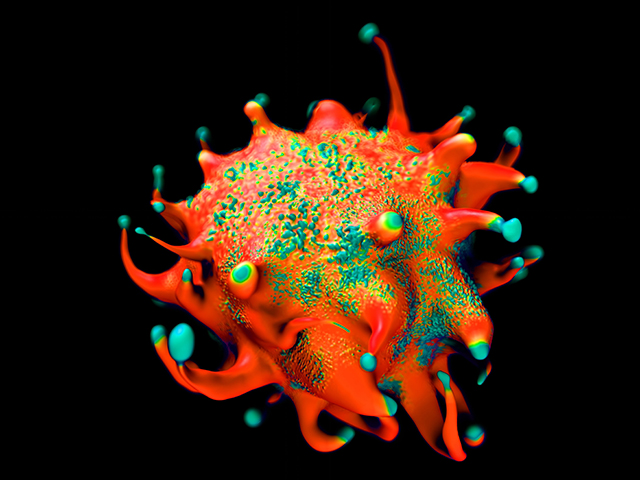Cancer treatments can be unsuccessful due to malignant cells surviving radiation, chemotherapy, or by evading apoptosis. Now researchers from the University of Tsukuba in Japan, demonstrate how the protein Livin—an apoptosis inhibitor—allows some lymphomas to resist therapy, and how targeting it may prove to be a practical treatment strategy in refractory cases.
Their study, “The inhibitor of apoptosis protein Livin confers resistance to Fas-mediated immune cytotoxicity in refractory lymphoma,” is published in the journal Cancer Research.
Apoptosis is the opposite of cell growth; it is cell death and it is a normal function of cells. If a cell detects that it has damaged DNA, it can activate apoptosis to remove itself from the population. Apoptosis has been established as a mechanism of anticancer defense. To divide and grow uncontrollably, a cancer cell not only has to hijack normal cellular growth pathways, but also evade cellular death pathways.
“Death receptor Fas-mediated apoptosis not only eliminates nonspecific and autoreactive B cells but also plays a major role in antitumor immunity. However, the possible mechanisms underlying impairment of Fas-mediated induction of apoptosis during lymphomagenesis remain unknown,” noted the researchers.
The researchers first modeled mature B-cell lymphoma in syngeneic mice. “We demonstrated that Fas downregulation is required both for mature B-cell lymphomagenesis and for lymphoma cell survival,” noted Eiji Sugihara, PhD, associate professor at the University of Tsukuba.
“Additionally, we showed that activation of CD40 signaling, which restores Fas expression, sensitized lymphoma cells to FasL-induced apoptosis and prolonged mouse survival. Extending these findings to eleven human NHL cell lines, we confirmed that downregulated Fas expression could be restored by CD40 activation in most human cell lines, and this conferred susceptibility to Fas-mediated apoptosis in about half the cell lines studied.”
The Fas receptor, binds with its ligand FasL and activates initiator and executioner caspases that methodically degrade proteins and inexorably kill the cell. Apoptosis pathways can be blocked by inhibitor of apoptosis (IAP) family proteins that directly inhibit caspase and pro-caspase.
“We employed our developed syngeneic lymphoma model to demonstrate that downregulation of Fas is required for both lymphoma development and lymphoma cell survival to evade immune cytotoxicity,” added the researchers.
The researchers observed that CD40 signal activation restored Fas expression and induced apoptosis after Fas ligand treatment in both mouse and human lymphoma cells.
Certain human lymphoma cell lines were discovered to be resistant to Fas-mediated apoptosis, with Livin, identified as a driver of resistance.The researchers also noted that BET family proteins (specifically BRD4 and BRD2) enhanced Livin expression in lymphoma cells to protect them from immune cytotoxicity. They demonstrated that BV6, an IAP antagonist that degrades Livin, extended the survival of mice transplanted with lymphoma cells previously rendered resistant to Fas-mediated apoptosis.
Lymphoma is a cancer of the lymphatic system. It develops in lymphocytes, which are a type of white blood cell. These cells help fight disease in the body and play an essential role in the body’s immune defenses. There were an estimated 18 million cancer cases around the world in 2018, of these 9.5 million cases were in men and 8.5 million in women.
The researchers’ findings open a new door of understanding into lymphoma development and immunotherapy resistance.
“We have gained a deeper insight into lymphomagenesis and the patterns of resistance to immunotherapy,” explained Sugihara. “Inducing apoptosis in cancer cells by combining CD40-mediated Fas expression with specific targeting of Livin using IAP inhibitors or BET inhibitors is a promising immunotherapeutic strategy against aggressive B-cell lymphomas and other intractable tumors.”


